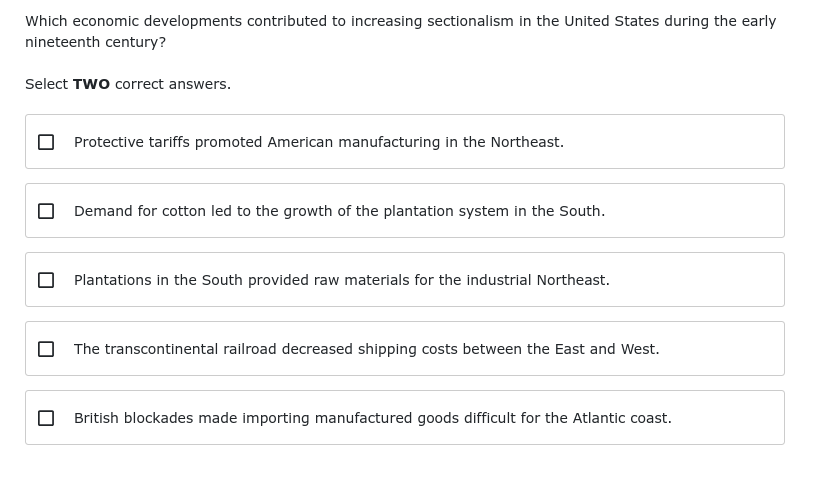Which economic developments contributed to increasing sectionalism in the United States during the early nineteenth century? Select TWO correct answers.

Understand the Problem
The question asks to identify two economic developments that contributed to increasing sectionalism in the United States during the early nineteenth century. Sectionalism refers to the growing divide and loyalty to specific regions (North, South, West) rather than the country as a whole. The question requires the user to understand the economic forces at play during that time and how they exacerbated regional differences and tensions.
Answer
Protective tariffs in the Northeast and demand for cotton in the South increased sectionalism.
The two correct answers are:
- Protective tariffs promoted American manufacturing in the Northeast.
- Demand for cotton led to the growth of the plantation system in the South.
Answer for screen readers
The two correct answers are:
- Protective tariffs promoted American manufacturing in the Northeast.
- Demand for cotton led to the growth of the plantation system in the South.
More Information
Sectionalism is loyalty to a particular region or section of a country instead of the entire country. In the U.S., it developed due to economic, social, and political differences between the North and the South.
Tips
Focus on the economic activities and how they differ geographically.
Sources
- Sectionalism | Definition, History, Examples, & Civil War - Britannica - britannica.com
- 9 Events That Led to the Civil War | HISTORY - history.com
AI-generated content may contain errors. Please verify critical information